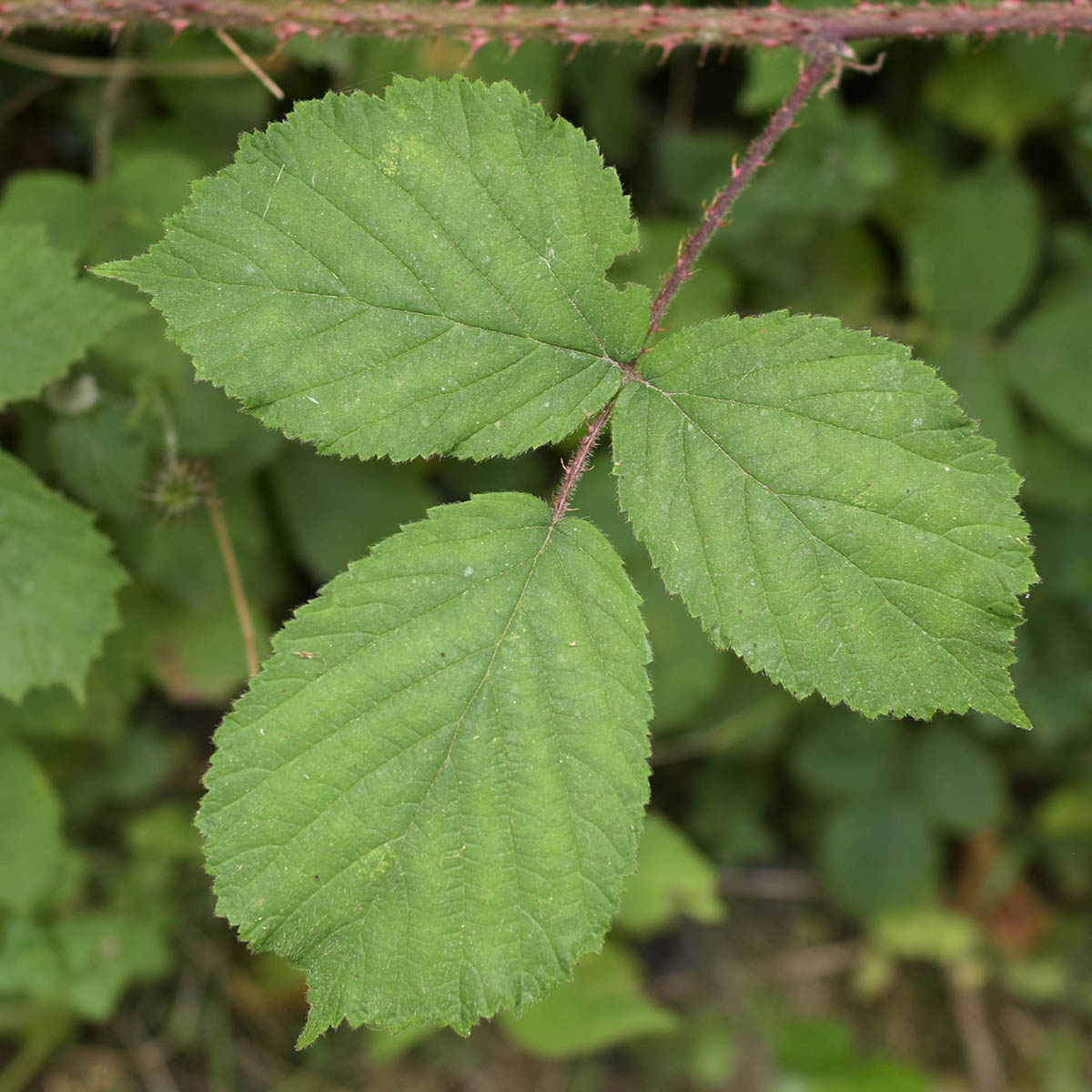
Rubus thyrsigeriformis – Series Hystrices
back to Alphabetical index · Taxonomic index
This bramble was known from Southampton Common and other parts of southern Hampshire by the Rubus specialist David Allen, who by chance came across a specimen in the British Museum herbarium from Cherbourg, France (at the time under a different name) which he realised was the same taxon. He later visited that locality and refound it. The details were published in the journal Watsonia in 1989, too late to be included in Edees and Newton's Brambles of Britain and Ireland (1988). More recently it has been found to be widespread in the Bath and Bristol area. It may be a relatively new arrival to this country. It is quite a distinctive member of the Hystrices, with narrow, bright pink notched petals and deep red styles.

Panicle branches are rather long and slender, widely divergent and adorned with numerous fine prickles and abundant stalked glands and hairs.

Flowers are about 2.5cm across. The petals are widely spaced with large gaps between them. They measure c.11-15mm long x c.7-8mm wide and are notched at the tip. Sepals have long narrow leafy tips which are patent or reflexed at flowering, with some becoming erect after the petals have dropped.


The stamens are short and rather sparse, so hardly obscure the red styles, which have yellowish tips.


Leaves are usually 3-foliate, but some have lobes on the lateral leaflets where the basal leaflets would be. Leaflets are sparsely hairy above, thin in texture. The terminal leaflet is obovate in general shape but the portion above has angled sides or an almost truncate appearance often with deeply serrate or incised margins and a long, fine, cuspidate apex which is often curved to one side. The lower half has nearly straight sides angled towards the base and shallowly serrate margins. The base is emarginate.




Leafets are thinly hairy below but not felted.


The first-year stem has a fairly typical Hystrican armature, with numerous prickles varying in size, but these photos show that the main prickles are mostly confined to the angles and the smaller pricklets occur on the faces. There are also frequent stalked glands and sparse to numerous long hairs. The colour varies from green to dull reddish or purplish.




